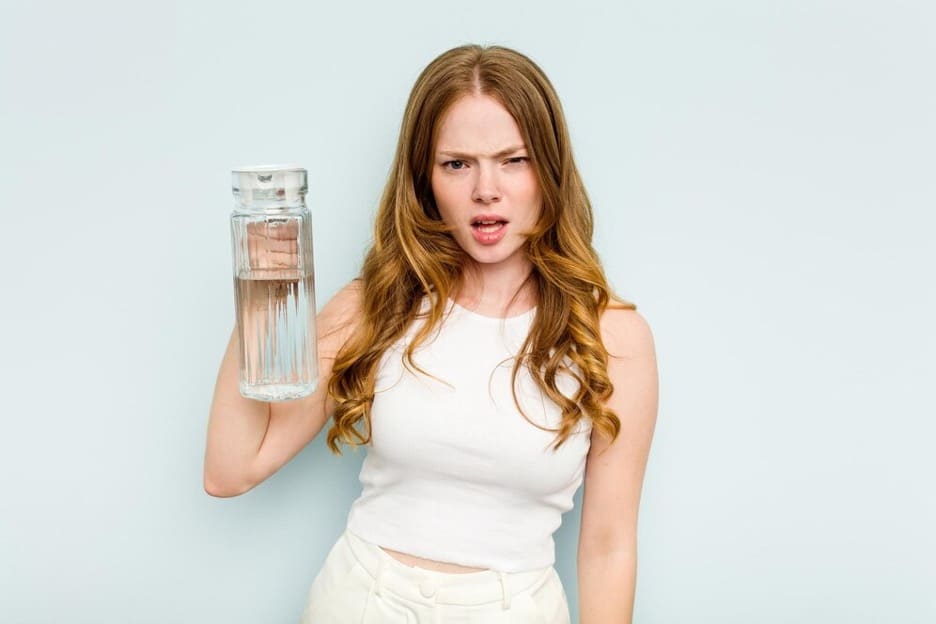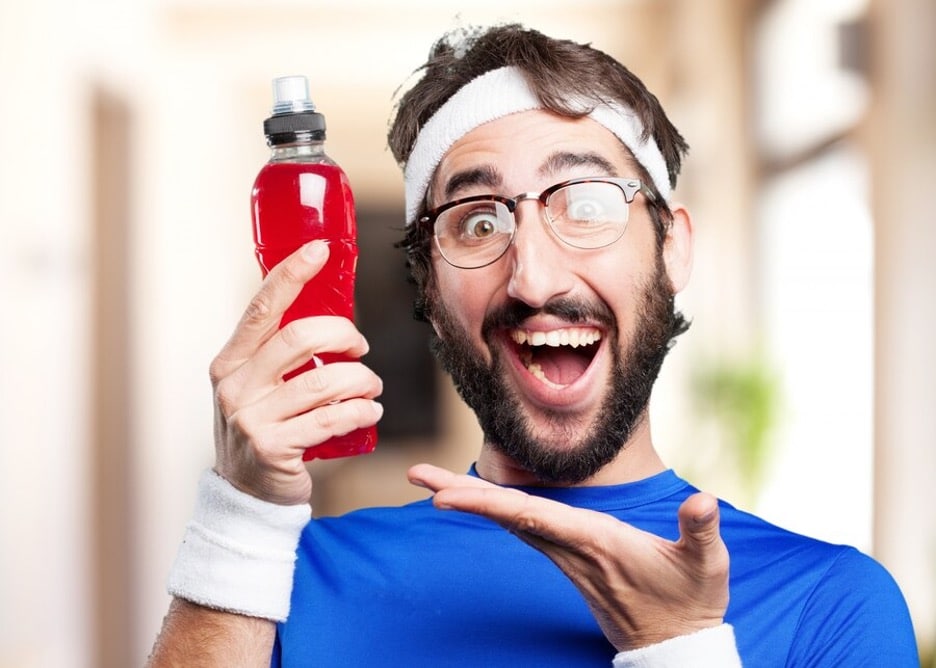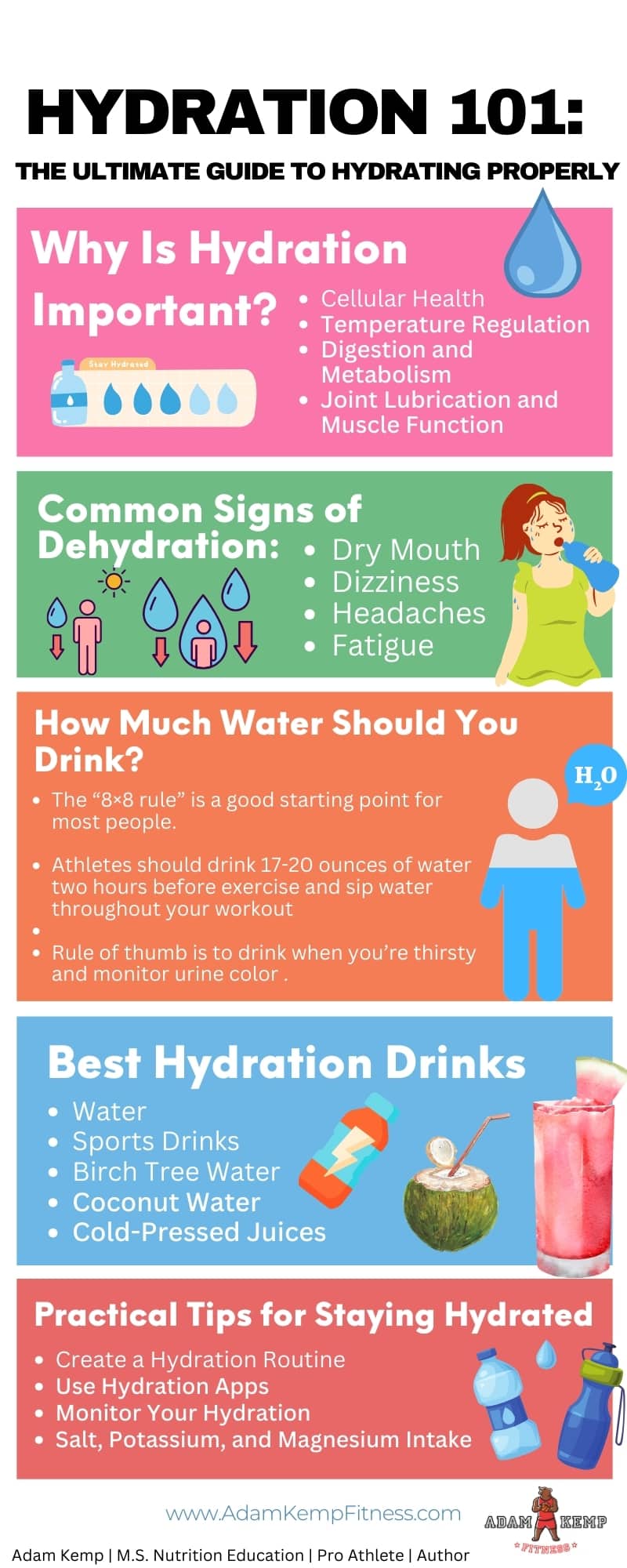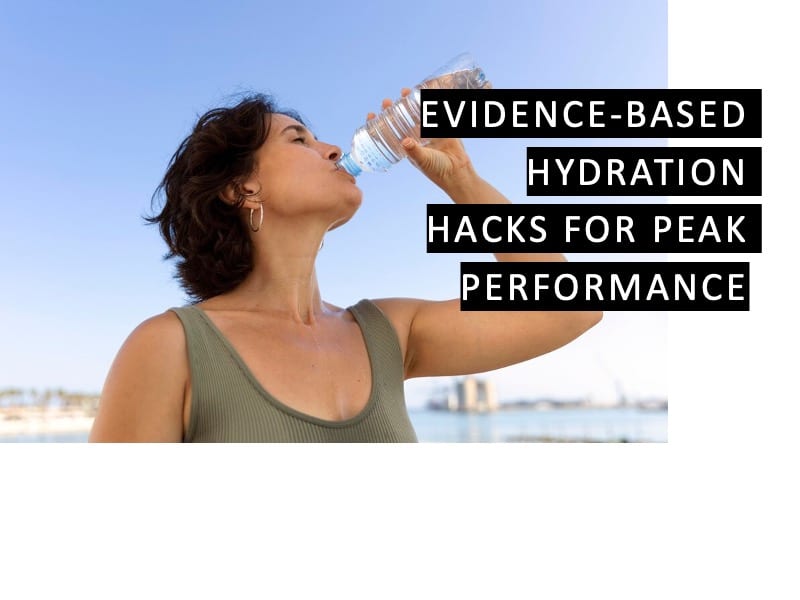8 Hydration Hacks for Peak Performance: Backed by Research
Hydration hacks can make the difference for athletes and active individuals who want to optimize physical performance, boost recovery, and stay mentally sharp throughout the day.
Whether you’re a professional athlete or simply aiming to optimize your health, staying hydrated is one of the most underrated ways to improve performance.
Hydration affects everything, from your energy levels and focus to muscle function and recovery.
Yet many active individuals unknowingly fall short of their daily hydration needs, compromising both wellness and performance.
If you’re tired of feeling sluggish, cramping mid-workout, or hitting mental fatigue too early, it’s time to upgrade your routine with smarter hydration strategies.
These science-based hydration hacks are designed to improve fluid absorption, prevent dehydration, and support performance hydration at every intensity level.
By learning how to hydrate more efficiently, rather than just drinking more water, you can unlock better endurance, faster recovery from exercise, and overall peak performance.
Why is Hydration Important for Peak Performance?
Hydration is essential for sustaining physical and cognitive performance, especially during intense training or competition.
Even mild dehydration, as little as a 2% loss in body weight through fluids, can impair endurance, strength, coordination, and mental focus (Sawka et al., 2005).
Water is the foundation of performance hydration because it plays a vital role in nearly every function of the body.
It helps regulate temperature, transport nutrients, cushion joints, and keep your muscles firing efficiently.
When you’re not drinking enough, your heart works harder, fatigue sets in faster, and recovery becomes slower, making it much harder to perform at your best.
For those seeking performance hydration, it’s not just about how much water you drink, it’s about maintaining optimal fluid balance before, during, and after physical activity to ensure every system in your body performs at its peak.
The 8 Best Peak Performance Hydration Hacks
The following hydration hacks are designed to help you stay optimally fueled, avoid performance dips, and get the most out of every workout or training session.
1.) Time Your Drinks Correctly
When it comes to hydration, it is all about timing. This allows fluids to be in the right place, at the right time.
When hydrating for optimal performance, a general rule of thumb is:
- Drink 16-20 ounces of fluid 2-3 hours before exercise
- Consume 8 ounces 30 minutes prior to warm-up
- Have 4-8 ounces for every 20 minutes of exercise, adjusting based on intensity and temperature
Following the workout, it is also critical to continue pumping the fluids to avoid dehydration, as the body’s metabolism is still elevated even after activity ceases.
2.) Consume Optimal Quantity

The effects of dehydration are real. Every athlete knows it.
Cramping. Weakness. Difficulty concentrating.
However, overhydration can be just as concerning.
Athletes can erroneously think that more is automatically better when it comes to fluid intake, but many of the same symptoms can present themselves when in a state of overhydration.
Not to mention that carrying excess fluid can make you feel bogged down and sluggish.
The key is to spread intake out into moderate quantities over regular intervals.
There is really no need to ever “chug” more than 20 ounces at a time. More than this will result in inefficient absorption.
3.) Be Smart About Electrolytes
Electrolytes are a trending word in the world of performance hydration.
Countless beverage companies slap the word “electrolyte” on their packaging and charge a 300% markup for their product.
However, according to Rayven Nairn, a dietitian at Johns Hopkins University Student Health, salt is the most important electrolyte for athletic performance.
It helps transmit electrical signals to the body’s muscles and allows cells to more effectively absorb nutrients for optimal performance.
From my own experience as a professional basketball player, I’ve found that taking ½ teaspoon salt shots regularly throughout the day, especially during the season when I’m sweating heavily, has made a significant difference in maintaining energy and hydration.
This simple habit has helped me avoid the fatigue and cramping that often come with long practices and games.
As such, many athletic trainers advise a 50/50 mix of water and sodium-infused sports drink for optimal fluid absorption during intense activity as one of the best hydration tips for athletes.
4.) Avoid Dehydration Triggers
Knowing the warning signs is one of the keys to avoiding dehydration.
For athletes, excessive sweating is obviously one of the tell-tale signs that it’s time to take in some fluids.
However, there are some other scenarios that can quickly cause dehydration to set in. Some warning signs of excessive fluid loss include:
- Vomiting
- Frequent urination
- Fever
- High ambient temperatures
- Specific medications
If you have experienced any of these conditions, it is crucial to closely monitor your fluid intake.
As the old saying goes: if you become thirsty, it’s already too late to avoid dehydration.
5.) Leverage IV Therapy

Mobile IV therapy is a trending option for modern athletes and those interested in a proactive health regimen.
By introducing key fluids directly to the bloodstream, IV therapy bypasses the lengthy digestion process for more efficient hydration.
This can help athletes perform at their best when it matters most.
“Proper hydration isn’t just about drinking water—it’s about how and when you replenish your body,” says Vanessa Cabrera, Founder of Phoenix Mobile IV Therapy and Las Vegas Mobile IV Therapy.
“For peak performance, especially in intense training or hot climates, IV hydration can help restore balance quickly and effectively.”
Once reserved to a clinical setting, mobile IV providers bring modern treatment directly to your home, office, hotel, or any other venue to seamlessly incorporate treatment into your daily schedule.
A registered nurse provider will help select the ideal IV drip with the appropriate electrolytes, minerals, and micronutrients to help you reach your performance and hydration goals.
6.) Download Hydration Apps
Technology is ubiquitous in our daily lives.
Make it your best friend when it comes to staying hydrated.
It can be hard to remember to intake fluids when you’re not thirsty, so download a hydration app to keep you on track.
Healthline recommends Waterllama, HydroCoach, and WaterMinder as some of the top options for staying ahead of your specific hydration needs.
7.) Understand Sports Drinks

Gatorade exploded in the 1970s and 80s as a preferred hydration source for athletes.
While it is packed full of the aforementioned electrolytes (sodium) crucial for optimal muscle function, not all sports drinks, including Gatorade, are always a friend to peak performance.
Many contain high amounts of sugar, which can result in suboptimal spikes in blood sugar.
In addition, dumping too much sodium into the stomach at one time can actually have a short-term dehydrating effect, as fluids from bodily tissues leave these key areas to rapidly diffuse the influx to the stomach.
As such, read labels carefully on sports drinks.
Choose those with low or no sugar, few additives, and moderate amounts of sodium, diluting them with water as necessary.
If you are looking for the best sports drinks, I often recommend Gatorade Fit and Prime Hydration due to their adequate electrolyte content, minimal sugars, and limited amount of artificial ingredients.
I also recommend Celsius Hydration packets, which are also very low in sugar or sweetener and provide a beneficial amount of electrolytes.
8.) Avoid Common Dehydrators
Even the best hydration strategies can be undermined by everyday habits that promote fluid loss.
Recognizing and limiting these common dehydrators is just as important as drinking enough water.
Certain drinks, such as coffee, energy drinks, and alcohol, act as mild diuretics, increasing urine output and making it harder to maintain fluid balance, especially if consumed in large quantities without additional water.
While they don’t need to be completely eliminated, pairing them with extra fluids is key.
High-sodium processed foods and excessive protein intake can also contribute to dehydration by increasing the body’s water demands during digestion and metabolic processing.
If you’re consistently sweating through workouts, playing sports, or exposed to heat, these factors can add up quickly.
That’s why I always monitor how much water I’m drinking relative to my diet and lifestyle, especially in-season.
Being mindful of these dehydration triggers will make your hydration hacks far more effective and help you maintain optimal energy and performance all day long.
Final Thoughts: Achieving Peak Performance with Evidence-Based Hydration Hacks

Achieving peak performance isn’t just about training harder, it’s about fueling smarter.
By prioritizing hydration timing, balancing electrolytes like sodium, and using tech or tools to stay consistent, you give your body the foundation it needs to thrive under pressure.
These aren’t gimmicks, they’re practical strategies rooted in science and tested by athletes at every level.
From personal experience, applying these hydration principles has helped me perform consistently throughout long seasons, intense games, and demanding training sessions.
Don’t overlook the basics, as hydration is one of the most powerful, yet underutilized performance tools available.
If you incorporate these hydration hacks into your daily routine, you’ll be better prepared to train, compete, and recover at your highest level.



